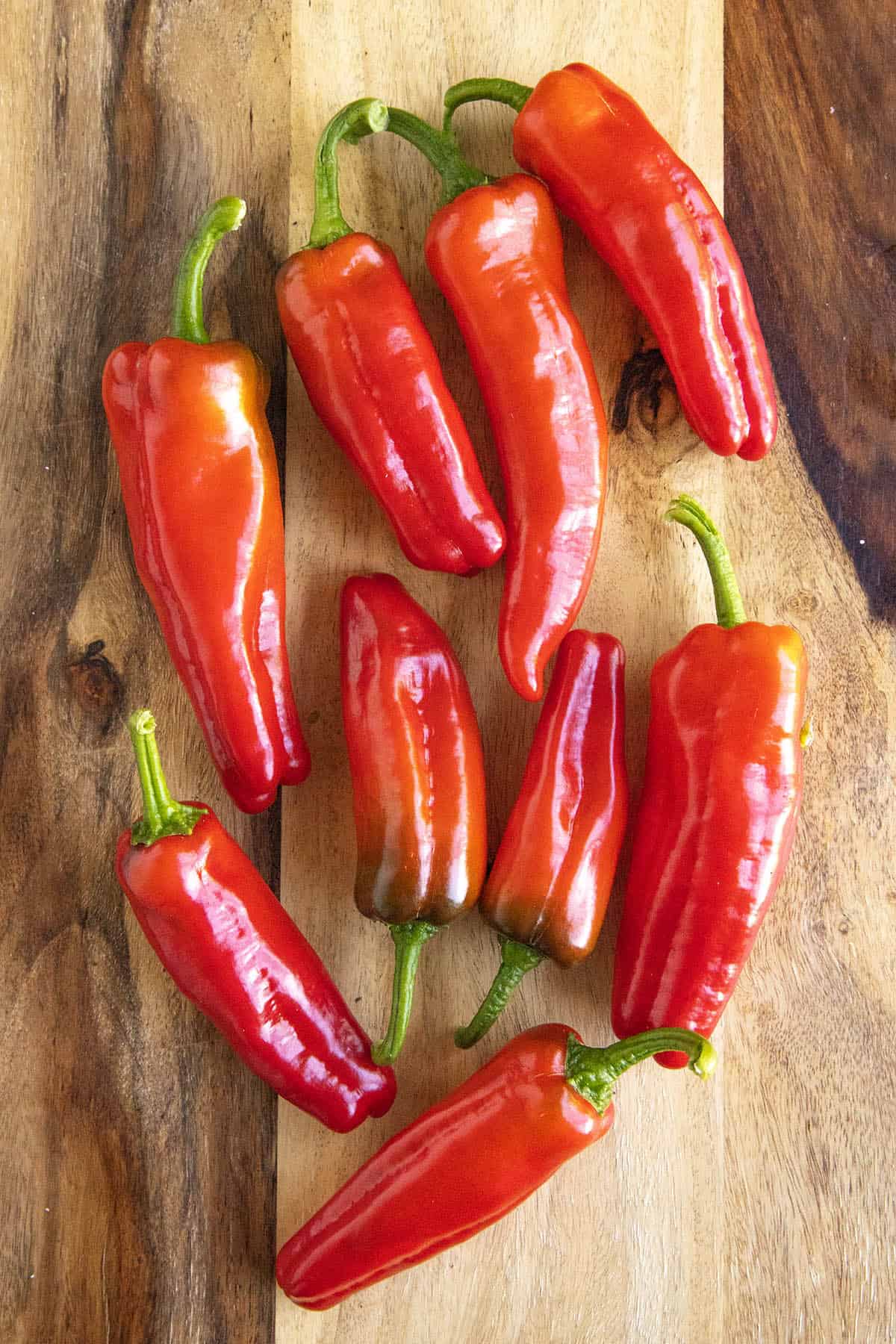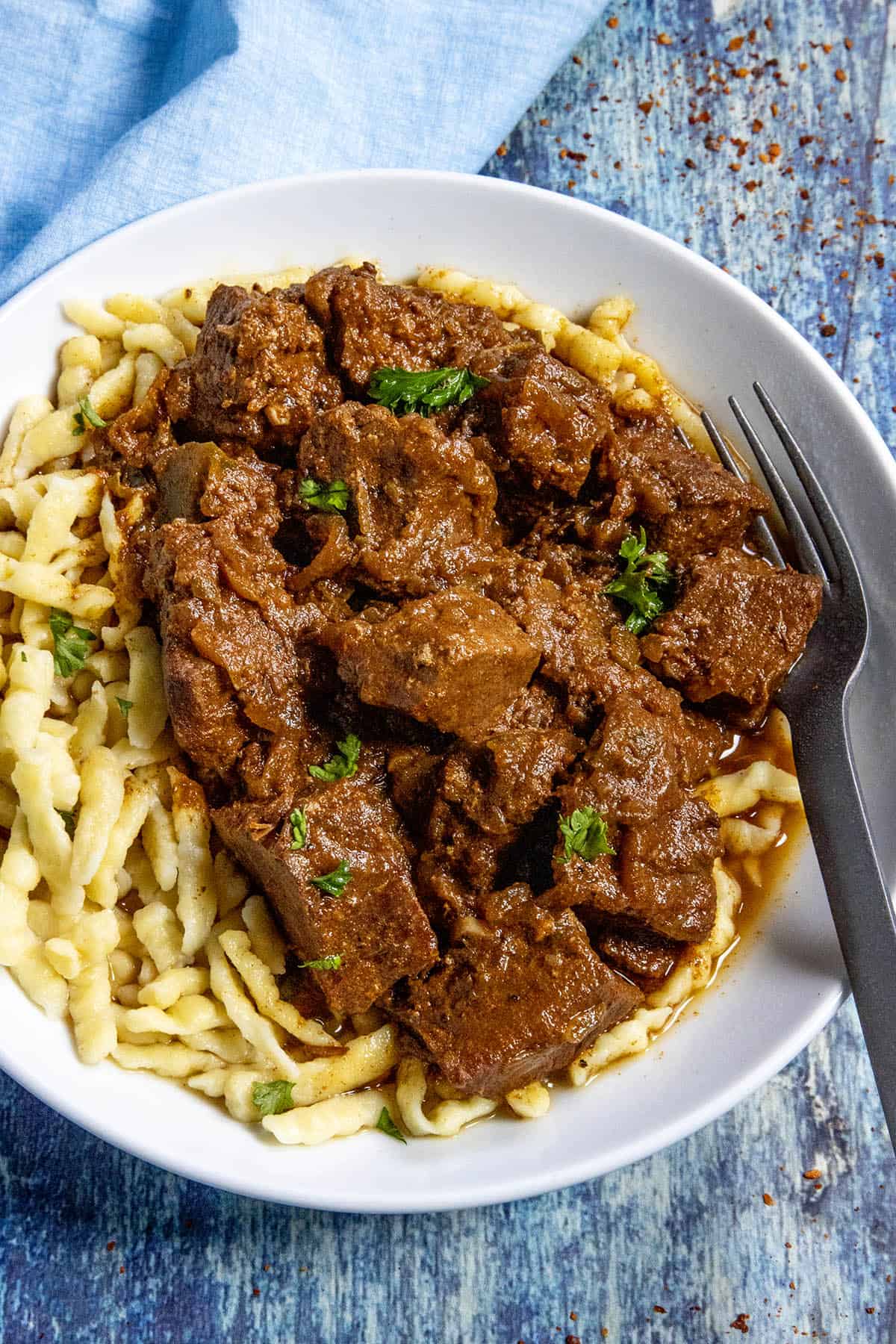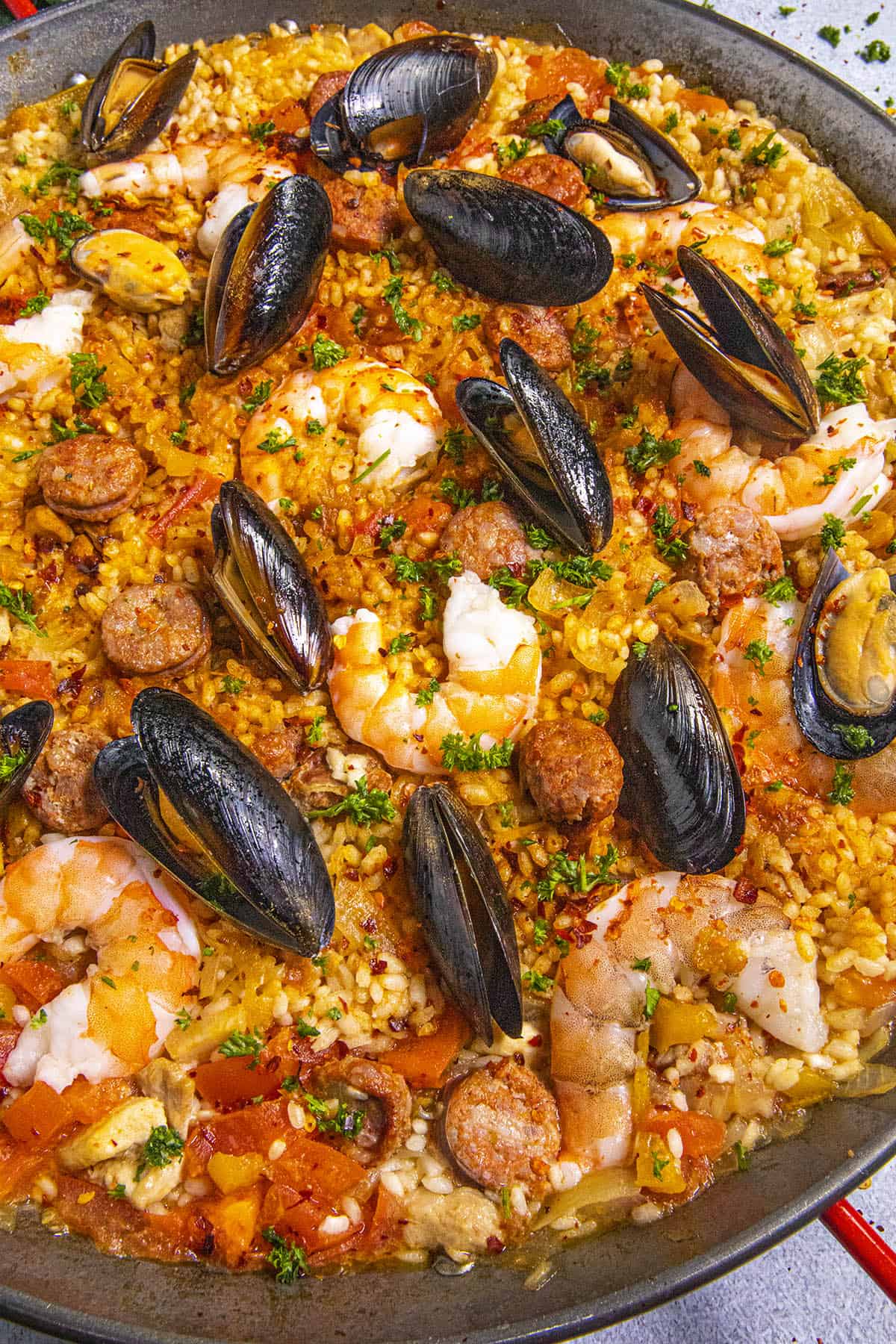Paprika peppers are the mild, vibrant red chilies behind the world-famous paprika spice. A cornerstone of Hungarian cuisine, these peppers offer gentle heat and rich, sweet flavor that brings depth and color to countless dishes around the world.

Scoville Heat Units: 250 - 1000 SHU
The paprika pepper is a large, cone-shaped red chili pepper that’s typically dried and ground into the familiar paprika spice most often associated with Hungary. These peppers grow up to 8 inches long and are loved for their sweet flavor and vibrant color rather than intense heat.
While most cooks think of paprika as a garnish for deviled eggs or potato salad, the peppers themselves offer a unique depth of flavor worth exploring.
Depending on where they’re grown, paprika peppers range in size, shape, and heat level, from delicate and sweet to mildly spicy.
Types and Origins
In Hungary, there are eight official grades of paprika, from the mildest (különleges, or “special”) to the hottest (erős).
Outside Hungary, paprika peppers are also cultivated in Spain, California, and other parts of the U.S. The most common paprika is made from the sweet red pepper, sometimes called the tomato pepper.
Learn more about the paprika spice here.
History of Paprika Chili Peppers
Paprika originated in Mexico, where it was cultivated for centuries before spreading to Europe.
The pepper was introduced to Hungary in the 17th century by groups fleeing north from the Turks, and it quickly became a staple in Hungarian cuisine by the late 18th century.
Two towns in Hungary (Szeged and Kalosca) competed against each other for the title of Paprika capital of Hungary. The name derives from the Hungarian word, “paprika”, which means pepper.
Paprika Pepper FAQ
What is paprika made from?
Paprika is made by drying and grinding paprika peppers, a type of mild red chili pepper. The flavor can range from sweet and fruity to slightly spicy, depending on the variety and where it’s grown.
Is paprika spicy?
Most paprika is mild, measuring only 250-1,000 Scoville Heat Units, though some Hungarian or Spanish varieties can carry a bit of heat. Smoked and hot versions offer more kick and depth.
Are paprika peppers and bell peppers the same?
Not exactly. Paprika peppers are usually smaller, thinner-walled, and more flavorful than bell peppers, though they’re related. Both belong to the Capsicum annuum species.
Where does paprika come from originally?
Paprika peppers originated in Mexico and were later brought to Europe in the 16th and 17th centuries. They became a key crop and culinary staple in Hungary and Spain.
What’s the difference between sweet, smoked, and hot paprika?
- Hot paprika comes from spicier varieties for more heat and bite.
- Sweet paprika is mild with fruity flavor and bright color.
- Smoked paprika (pimentón) is dried over wood fires for a rich, smoky aroma.
Cooking with Paprika
Paprika peppers and the spice made from them are essential in kitchens around the world. Beyond their bold red color, they add gentle warmth, sweetness, and a hint of fruitiness that can completely transform a dish.
Whether you’re using fresh paprika peppers or ground paprika powder, their versatility is what makes them so popular and loved.
Hungarian Paprika Dishes
In Hungary, paprika is more than a spice, it’s a national treasure. It’s used generously in dishes like chicken paprikash, goulash, and pörkölt (a rich meat stew).

These recipes rely on the deep, sweet flavor of Hungarian paprika to build layers of flavor and color. Different grades of paprika are often blended to create the perfect balance of sweet and heat.
Spanish Paprika (Pimentón)
Spain’s version of paprika, known as pimentón, is famously smoked over oak wood for a rich, earthy aroma.
It’s a defining flavor in dishes like paella, chorizo sausage, and patatas bravas. Varieties range from dulce (sweet) to picante (hot), each bringing a slightly different character to Spanish cuisine.

Everyday Uses for Paprika
Don’t save paprika just for garnishing deviled eggs. It’s incredibly useful in everyday cooking. Add it to rub blends for chicken, pork, or fish. Stir it into soups, stews, and sauces for added depth. Sprinkle it over roasted vegetables for color and a mild kick.
Try mixing sweet and smoked paprika together for a deeper, more balanced flavor. I use paprika for many of my own homemade spice blends.
Using Fresh Paprika Peppers
If you can find fresh paprika peppers, use them like sweet peppers. They’re great for roasting, stuffing, or drying at home to make your own paprika powder.
Slice them into salads, sautés, or chili sauces for a pop of color and gentle spice. Their flavor is mild, so they pair well with both delicate and bold ingredients.
We love pickling them to use a topping for sandwiches and salads. They're perfect mild peppers in every way.
NOTE: This post was updated on 10/7/25 to include new information and photo. It was originally published on 3/31/15.



Mary Jane says
The original peppers are said to have come from Turkey, specifically the Ottoman Empire.
... says
They may have come THROUGH there by but all capsicum peppers (chili and bell) came from the Americas. This is definitive through the DNA record. The "Old World" only had black pepper prior to colonizing the "New World" so it's not possible that they're actually from the Ottoman Empire.
Paul says
Love the site... wanted to point out that paprika, either the spice or the pepper, didn't originate in Hungary. The pepper was brought to Europe from Mexico, where it had been grown and dried and used as a spice for many centuries.
Michael Hultquist - Chili Pepper Madness says
Paul, you are correct, and this page has been on my list to update. I made an update, but also do have more information on paprika (the spice) on this page: https://www.chilipeppermadness.com/cooking-with-chili-peppers/paprika/. Appreciated!
Andrea Garcia says
Where can I buy the pepper itself in the US?
Mike Hultquist says
Check out my Chili Pepper Resources page: https://www.chilipeppermadness.com/resources/